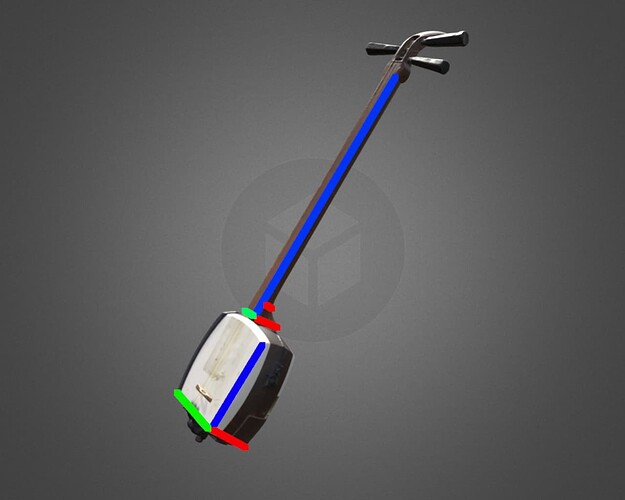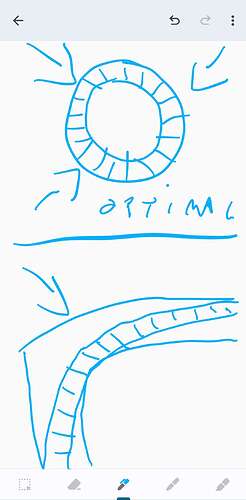I am posting here my original answer on the Bachido Discord, plus a few adjustments:
A circle is the strongest possible shape to withstand inwards pressure.
Furthermore, we can draw a direct parallel with brick made arch bridges, where the arrangement of bricks only make it stronger with pressure, as each brick acts as a wedge.
A Shamisen body is square(ish), and depending on how you cut the block and which direction you place the grain, you’ll either have it very fragile on two sides, or somewhat fragile on all sides. The square-ish shape causes the grain to lose the wedge shape that’s crucial for arch strength exactly at the middle of the arch, which incidentally is the part where the skin pushes the most against.
Heft makes up for loss of grain strength though. So if you are willing to go 25mm and up on edge thickness, and use a pretty elastic hardwood, you may be able to pull it off. I wouldn’t trust it 100% thought.
There was a question by @Brown on Discord:
What if the interior of the dou was rounded to form an arch?
Answer:
That would completely solve the issue, though it would possibly change the sound a bit (or maybe even a lot).
I’m not a mathematician, but I’m sure there are calculations that would show the required continuous grain section thickness whilst keeping outlier shapes around it (inside and out) relatively free.
All that to say that if you could keep an internal arch of wedges of a certain thickness, even if such arch would tend towards an ovoid shape, you could vary the external shape (corners) and internal shape (rounded corners) and get closer to the geometry that would produce a Shamisen sound. And given that the internal corner is a place where a lot of inward pressure exists (from the skin), one could even carve a line to force a sharper inside corner.
Here is an image to illustrate:
I am, however, curious to see what kind of side panel grain aesthetics you would achieve with a build like that.
@Brown asks:
I’d have to guess similar ones to taiko and koto, yeah?
Answer:
Depending on the size of the taiko, the curvature from top to middle can make it transition between more or less rings of the tree. A Shamisen, with the external squared corners will force a wider transition, showing wood from near the core at the middle of the panel, and wood from near the bark (depending on circumference of the tree, of course) at the corners.
Some woods have a beautiful and stable transition, some others have a tendency to detach. That being said, I am now picturing in my mind a Shamisen where the corners would be a chamfer showing a live edge (outer skin of a tree, with bark removed), similar to the edge of Murasaki’s shamisen stands. That can be quite the rustic look, especially on a medium brown wood.
As for koto, I can’t draw a good parallel, as I am yet to explore the techniques of its building process. Lots of unknowns for me there.
@TouhouLInuxFan
Feel free to ask anything else.
By the way, I’d like to invide you to join our Discord, as the conversation is more active there.


